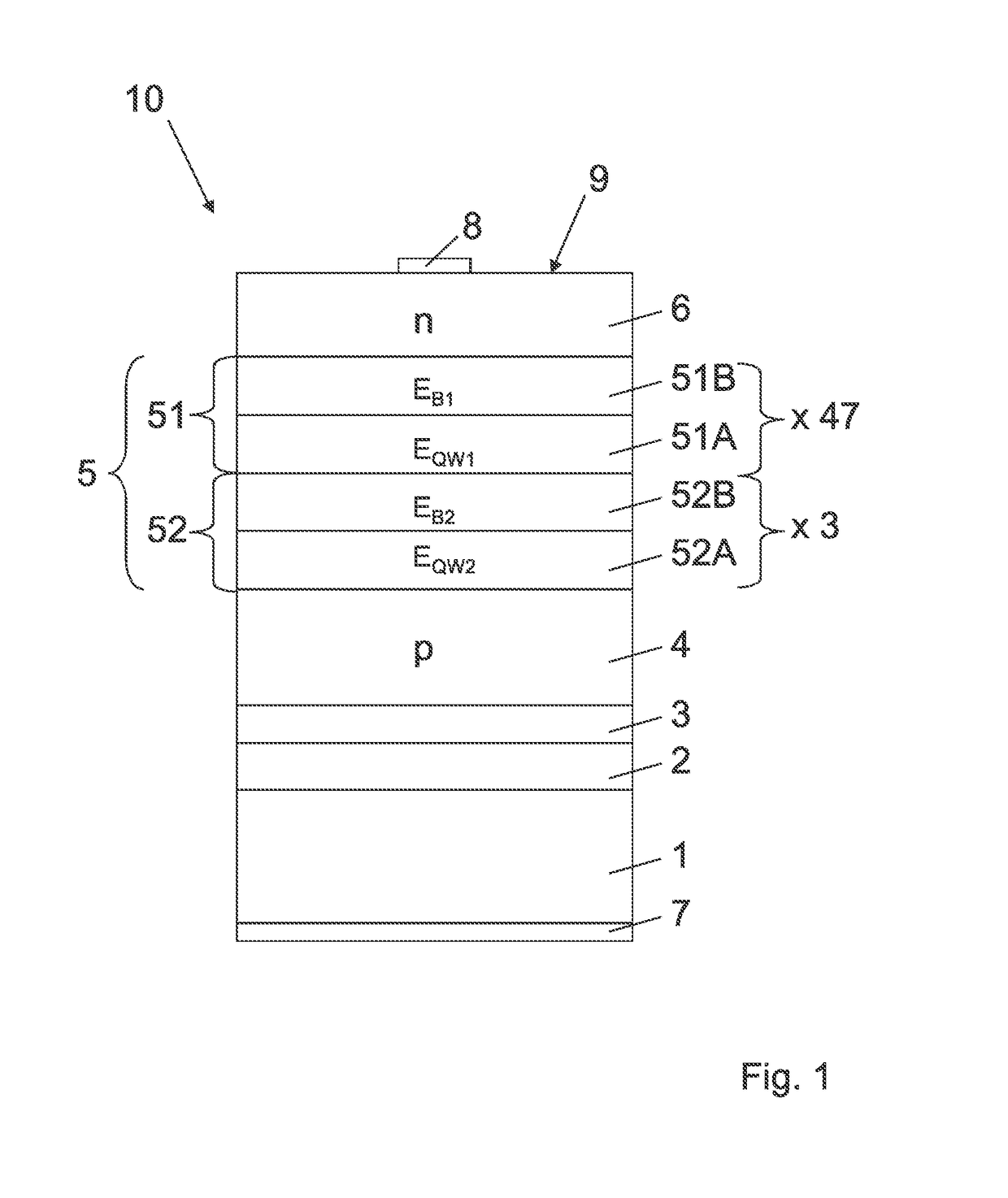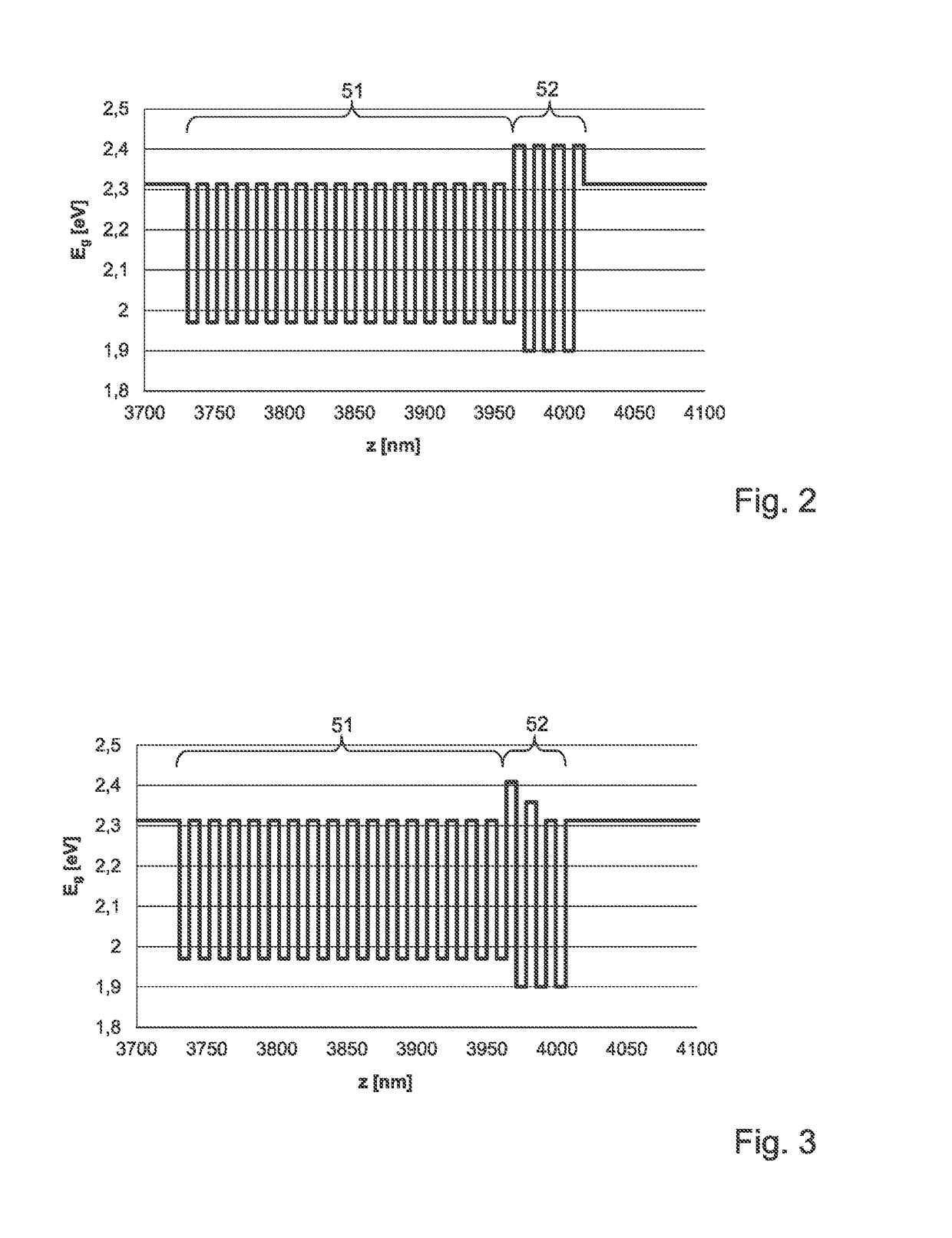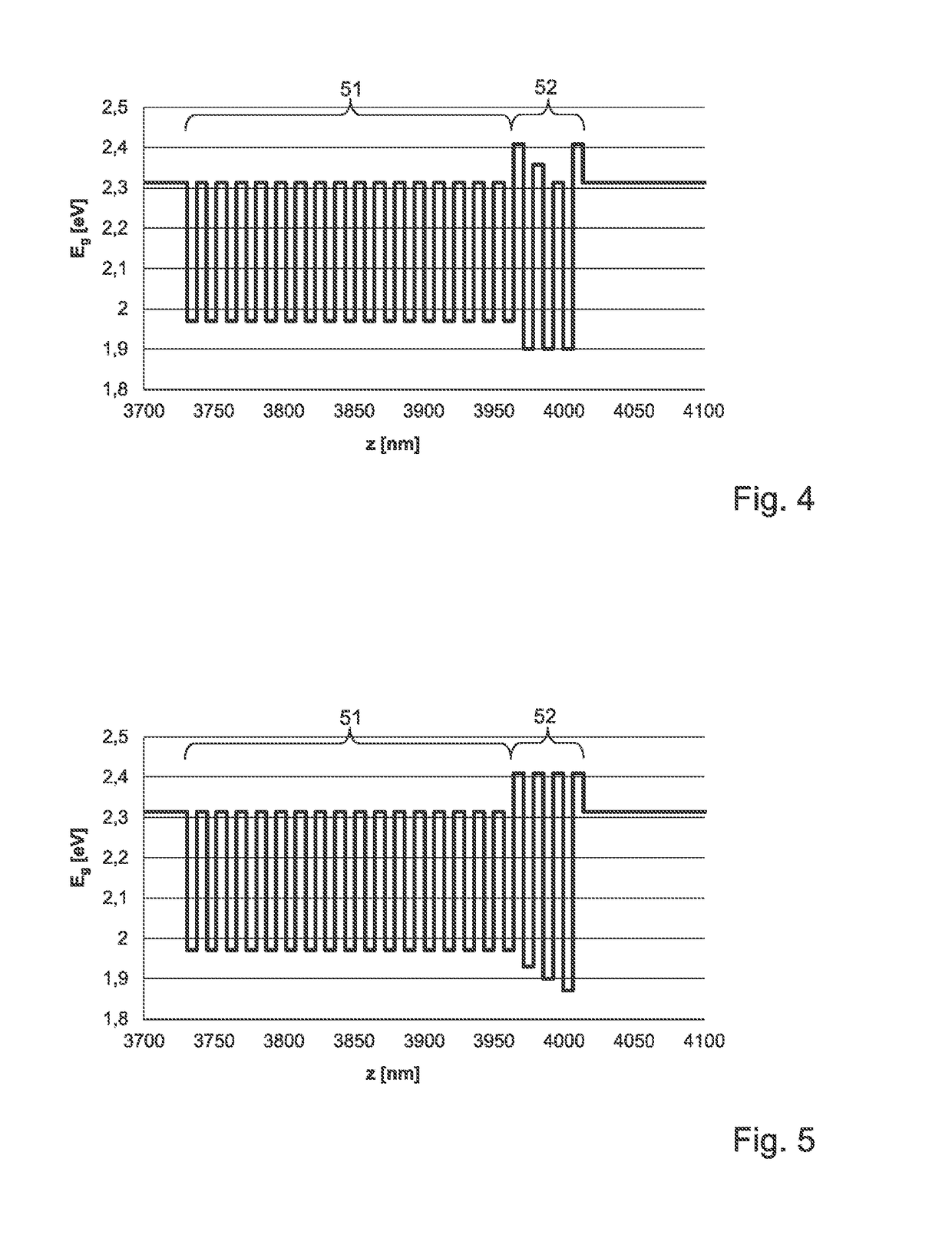Light emitting diode chip having temperature compensation of the wavelength
a technology of light-emitting diodes and wavelength compensation, which is applied in the direction of basic electric elements, electrical equipment, semiconductor devices, etc., can solve the problem of increasing the wavelength of emitted radiation with increasing operating temperature, and achieve the effect of reducing the temperature-dependent radiation emission
- Summary
- Abstract
- Description
- Claims
- Application Information
AI Technical Summary
Benefits of technology
Problems solved by technology
Method used
Image
Examples
Embodiment Construction
[0025]The optoelectronic semiconductor chip 10 shown in FIG. 1 according to an exemplified embodiment is an LED chip, which comprises a p-type semiconductor region 4, an n-type semiconductor region 6 and an active layer 5, which is arranged between the p-type semiconductor region 4 and the n-type semiconductor region 6 and is adapted for emitting radiation. The exemplified embodiment of the optoelectronic semiconductor chip 10 is what is known as a thin-film semiconductor chip, from which a growth substrate has been removed that was used originally for epitaxial growth of the semiconductor layers 4, 5, 6, and instead the semiconductor layer stack has been bonded by means of a bonding layer 2, in particular a solder layer, to a carrier substrate 1 that is different from the growth substrate.
[0026]In a thin film LED chip 10 of this type, the p-type semiconductor region 4 typically faces the carrier substrate 1. A mirror layer 3, which advantageously deflects radiation emitted towards ...
PUM
 Login to View More
Login to View More Abstract
Description
Claims
Application Information
 Login to View More
Login to View More - R&D
- Intellectual Property
- Life Sciences
- Materials
- Tech Scout
- Unparalleled Data Quality
- Higher Quality Content
- 60% Fewer Hallucinations
Browse by: Latest US Patents, China's latest patents, Technical Efficacy Thesaurus, Application Domain, Technology Topic, Popular Technical Reports.
© 2025 PatSnap. All rights reserved.Legal|Privacy policy|Modern Slavery Act Transparency Statement|Sitemap|About US| Contact US: help@patsnap.com



